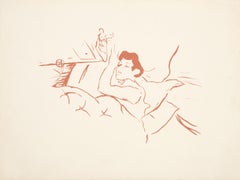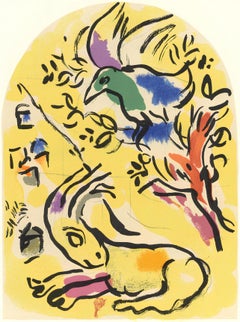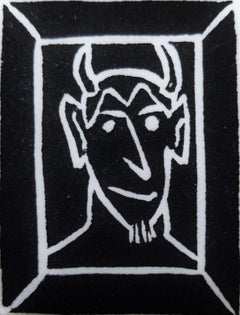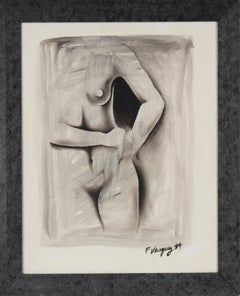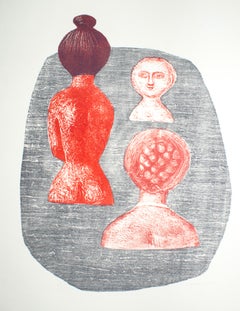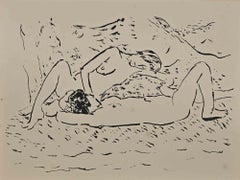Baby Art
1890s Art Nouveau Prints and Multiples
Lithograph
1960s Expressionist Figurative Prints
Lithograph
1990s Contemporary Portrait Prints
Linocut
1990s American Impressionist Nude Paintings
Canvas, Oil
1950s Figurative Prints
Lithograph
1920s Modern Figurative Prints
Lithograph
2010s Contemporary Figurative Drawings and Watercolors
Paper, Pencil, Color Pencil
Late 20th Century Realist Still-life Paintings
Canvas, Oil
21st Century and Contemporary Contemporary Figurative Drawings and Water...
Ink, Archival Paper
1950s American Realist Figurative Prints
Offset
17th Century Old Masters Paintings
Oil
1950s Modern Landscape Prints
Lithograph
2010s Outsider Art Figurative Drawings and Watercolors
Paper, Ink
21st Century and Contemporary Pop Art Figurative Sculptures
Steel
1970s Contemporary Landscape Prints
Etching
1960s American Modern Nude Prints
Lithograph
1990s Prints and Multiples
Offset
2010s Surrealist Portrait Paintings
Gold Leaf
Early 2000s Black and White Photography
Archival Pigment
Early 2000s Contemporary Figurative Photography
Archival Paper, Photographic Paper, C Print, Color, Polaroid
1970s Outsider Art Figurative Drawings and Watercolors
Paper, Pencil
1990s Contemporary Nude Photography
Silver Gelatin
21st Century and Contemporary Contemporary Portrait Paintings
Mixed Media, Canvas, Acrylic
1950s Fauvist Prints and Multiples
Lithograph
Late 17th Century Old Masters Figurative Paintings
Oil, Wood Panel
2010s Contemporary Figurative Sculptures
Glass, Acrylic, Polymer
Late 20th Century Pop Art Prints and Multiples
Offset
1640s Modern Figurative Prints
Etching
21st Century and Contemporary Contemporary Nude Paintings
Canvas, Oil
1910s Figurative Drawings and Watercolors
Paper, Charcoal, Pencil
2010s Animal Prints
Plexiglass
1810s Old Masters Figurative Prints
Drypoint, Etching, Aquatint
1990s Impressionist Nude Drawings and Watercolors
Paper, Graphite
1950s Surrealist Figurative Prints
Lithograph
1930s Art Deco Figurative Paintings
Ballpoint Pen
21st Century and Contemporary Expressionist Figurative Paintings
Canvas, Oil
1990s Contemporary Photography
Silver Gelatin
2010s Academic Landscape Drawings and Watercolors
Paper, Pencil, Graphite
2010s Impressionist Animal Paintings
Canvas, Oil
1960s Pop Art Figurative Drawings and Watercolors
Paper, Watercolor, Pencil
17th Century Portrait Paintings
Canvas, Oil
1990s Pop Art Animal Prints
Screen
1960s American Modern Portrait Prints
Offset
1740s Old Masters Figurative Prints
Etching
21st Century and Contemporary Figurative Paintings
Mixed Media
1960s Modern Landscape Prints
Lithograph
Early 17th Century Old Masters Figurative Drawings and Watercolors
Handmade Paper
1960s Expressionist Figurative Prints
Lithograph
1930s Modern Figurative Photography
Black and White, Silver Gelatin
19th Century Victorian Landscape Paintings
Oil
1950s Pop Art Figurative Prints
Paper, Lithograph
1890s Post-Impressionist Portrait Prints
Paper, Lithograph
19th Century Portrait Paintings
Oil
1970s Contemporary Figurative Prints
Lithograph
2010s Contemporary Nude Photography
Archival Paper, Photographic Paper, C Print, Color, Polaroid
Mid-20th Century American Modern Landscape Prints
Screen
2010s Pop Art Portrait Paintings
Enamel
1990s Modern Animal Prints
C Print
1910s Prints and Multiples
Etching
1950s Modern Landscape Prints
Lithograph
